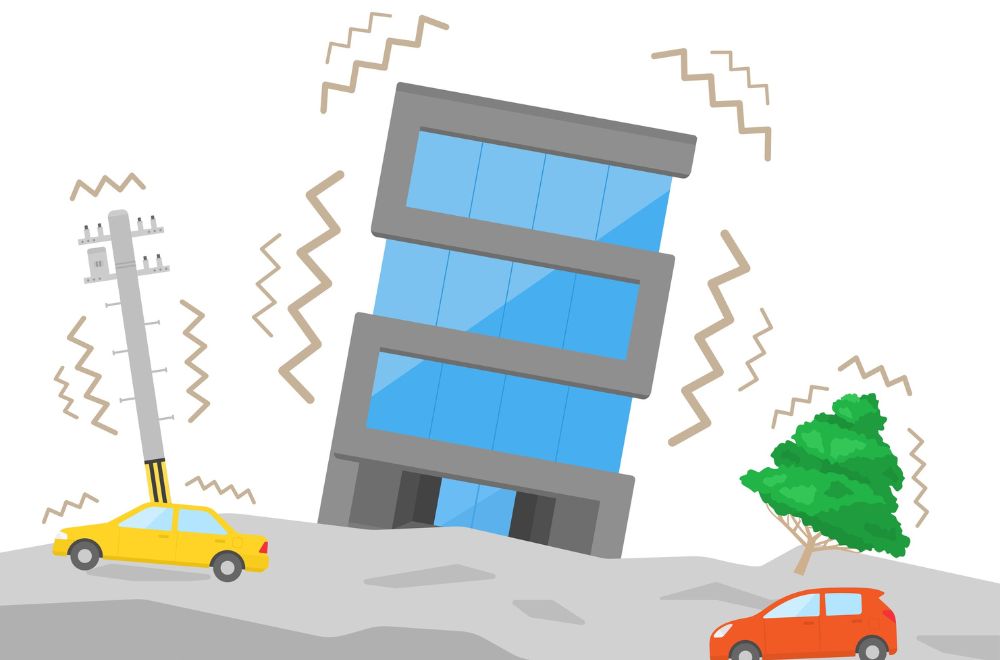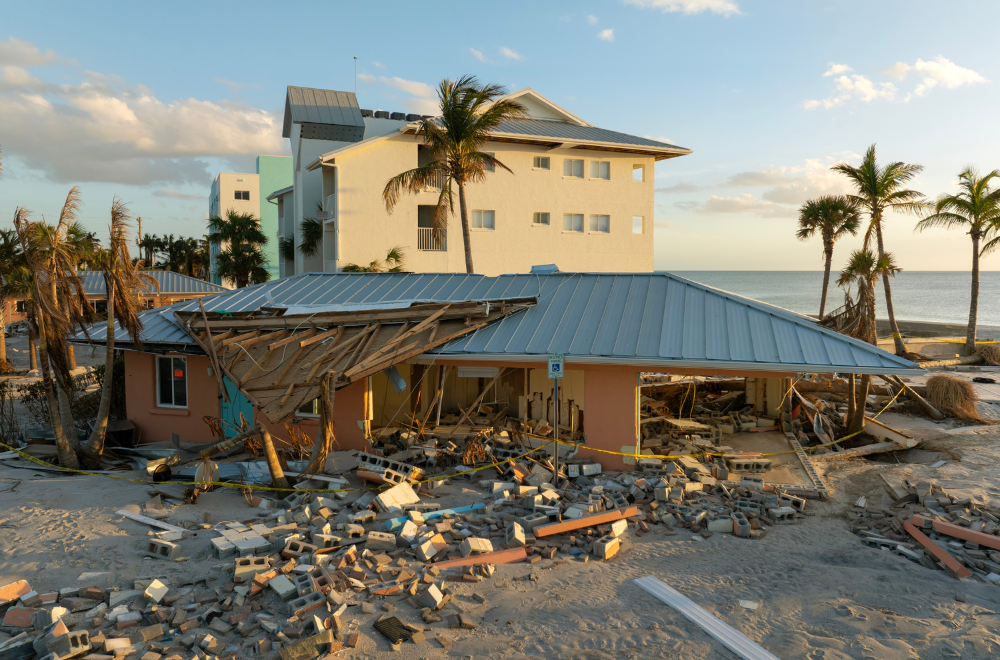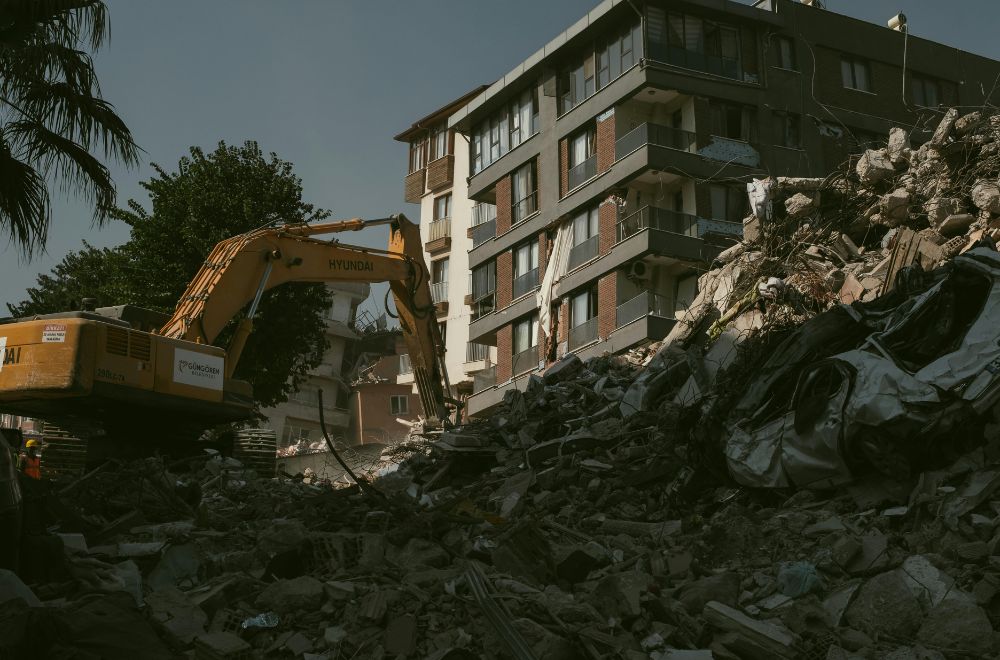Understanding whether earthquake insurance is worth it in California starts with recognizing how different the state’s risk landscape truly is. With hundreds of active faults, strict building codes, and sky-high reconstruction costs, even one major quake can upend a homeowner’s finances overnight. Yet fewer than 15% of Californians carry this coverage, often assuming government aid or their homeowners policy will step in—which it won’t. This article breaks down what earthquake insurance really covers, how deductibles and premiums work, and when it makes financial sense to have it.
As an independent agency, Old Harbor Insurance Services helps Californians evaluate their exposure and design cost-effective protection that aligns with their home and budget.
Why Earthquake Insurance Matters (Even Though Few Californians Buy It)

Homeowners often skip earthquake coverage because it feels optional—until a major quake hits and financial reality sets in.
The coverage gap
Standard homeowners policies exclude earthquakes and earth movement. California insurers are legally required to offer earthquake insurance every two years, but homeowners must actively accept it.
Low adoption, high exposure
According to the California Earthquake Authority (CEA), only about one in ten homeowners carries earthquake insurance. Meanwhile, more than 500 active faults crisscross the state, and the USGS estimates a 99% chance of at least one magnitude-6.7 or greater earthquake in California within 30 years.
Government aid is limited
Federal disaster aid is designed for emergency relief, not full rebuilding. It often comes as low-interest loans, not grants. Homeowners without coverage can face years of debt recovery.
What Earthquake Insurance Covers — and What It Doesn’t
Knowing what’s protected—and what’s not—helps you decide whether earthquake coverage fits your situation.
What’s typically covered
- Dwelling coverage: Repairs or rebuilding for structural damage, including foundations, walls, and chimneys.
- Personal property: Furniture, appliances, and belongings damaged by shaking.
- Loss of Use (ALE): Pays for temporary housing if your home becomes uninhabitable. (In CEA policies, ALE has no deductible.)
- Ordinance or Law coverage: Helps pay for code upgrades during rebuilding.
What’s not covered
- Land, landscaping, or fencing
- Flood, tsunami, or storm surge damage
- Fire following an earthquake (covered under homeowners insurance)
- Gradual or cosmetic damage
Deductibles
Earthquake policies use percentage-based deductibles—often between 5% and 20% of the home’s insured value. A $600,000 home with a 15% deductible means you’d pay the first $90,000 of damage before the policy contributes.
When Earthquake Insurance Is (and Isn’t) Worth It
Earthquake insurance isn’t for everyone, but for many Californians, it’s worth serious consideration—especially when you weigh your home’s construction, equity, and location against the potential cost of rebuilding after a major quake.
When it makes sense
- High-risk zones: Homes located near active faults like the San Andreas, Hayward, or Newport-Inglewood are far more likely to experience severe shaking. Even moderate quakes in these zones can cause foundation and chimney failures that exceed a standard deductible.
- Older or unretrofitted homes: Wood-frame or soft-story structures built before modern seismic codes often lack foundation bolting or wall bracing. These are the buildings most likely to slide or collapse—and therefore most in need of earthquake protection.
- Significant equity: If you’ve paid off a large portion of your mortgage, your home equity represents your single biggest financial asset. Without earthquake insurance, that value can vanish overnight, leaving you with a damaged property and no way to rebuild.
- Limited cash reserves: The average rebuild cost in many California counties now exceeds $300 per square foot, meaning even a modest 1,500-square-foot home could require more than $450,000 to restore. For families without deep savings, coverage can be the difference between recovery and financial ruin.
- High property values: In markets like Los Angeles, San Francisco, and Orange County, the cost to repair or replace even partial damage can rival the price of a full home elsewhere in the country—making coverage more practical than speculative.
When it might not
- Newer, reinforced construction: Homes built under post-1980 seismic codes or those with modern foundations and shear walls are less likely to sustain catastrophic damage. Some owners choose to self-insure or invest in partial coverage for structure only.
- High-liquidity homeowners: Those with substantial cash reserves or diversified assets may elect to self-insure against total loss, using funds to rebuild rather than pay long-term premiums. Still, even for wealthier homeowners, the tax and liquidity impact of such an event should be weighed carefully.
How Earthquake Insurance Costs Are Determined

Premiums vary widely, but they aren’t random. California’s risk-based system rewards data, not guesswork.
Key pricing factors
- Home characteristics: Year built, construction type, number of stories, and retrofit status.
- Location: Distance to active faults, soil stability, and ZIP-level shake probability.
- Coverage choices: Dwelling limit, personal property coverage, and deductible percentage.
- Insurer & reinsurance costs: The CEA and private carriers periodically adjust rates to match reinsurance markets.
Typical range
The average annual premiums for single-family homes range from $800 to $2,000, with older homes in soft soils trending higher. Discounts up to 25% may apply for completed retrofits verified through licensed inspections.
Building a Smart Earthquake Plan
Buying coverage is step one. Structuring it thoughtfully—so it fits your home, finances, and recovery plan—is what makes it truly valuable.
Choose coverage layers that matter
Start by selecting protection for your structure, contents, and additional living expenses (ALE). Skipping contents coverage can lower premiums, but make sure you aren’t leaving out essentials like furniture, electronics, or art that would be costly to replace. Review sub-limits carefully—some policies cap payouts for valuables such as jewelry or collectibles. If you rent out part of your property, verify whether tenant belongings are covered under your plan or require a separate policy.
Match deductibles to savings
A higher deductible can significantly reduce your premium, but it also increases your out-of-pocket risk when disaster strikes. Choose a deductible that aligns with your available savings or emergency fund, ideally an amount you could access quickly without taking on debt. Homeowners often find the 10–15% range strikes a balance between affordability and financial comfort.
Pair with retrofitting
If your home was built before 1980—or before modern seismic codes—a seismic retrofit can strengthen its foundation, brace cripple walls, and anchor the structure. Beyond safety, retrofitting can qualify you for premium discounts and dramatically lower the chance of red-tagging after a quake. Keep receipts, engineering reports, and permits on file to support your insurer’s documentation requirements.
Review annually
Construction costs in California rise rapidly due to material shortages and labor demand. Re-evaluate your dwelling limit each year to reflect current rebuild costs, not your home’s market value. Review your policy’s ALE and personal property limits as well—family size, renovations, and inflation all influence what “enough” coverage looks like over time.
California’s Legal and Market Landscape
Earthquake insurance in California operates within a highly regulated but constantly evolving marketplace, shaped by both legislation and the state’s broader natural disaster trends.
The mandatory offer rule
By law, all property insurers in California must offer earthquake coverage at least once every two years, typically through the California Earthquake Authority (CEA)—a publicly managed pool that includes more than 25 participating insurers. Homeowners can decline the offer, but they must do so in writing. The intent behind this rule is to ensure that residents are consistently reminded of their exposure, especially as property values, building codes, and seismic risks change over time.
The CEA vs. private market
CEA policies are standardized and benefit from state oversight, reinsurance protection, and stability, even when market volatility increases. Premiums are regulated and backed by extensive claims reserves.
Private insurers, by contrast, may offer customized coverage, such as protection for swimming pools, detached garages, or higher dwelling limits. They can also provide deductible flexibility (some as low as 2.5%) and broader options for condos or high-value homes. However, these tailored benefits usually come at higher cost and are subject to tighter underwriting requirements.
Market pressures
In recent years, insurers have been rebalancing their portfolios after major wildfire losses and rising reinsurance expenses. That shift has indirectly affected the availability and pricing of earthquake insurance, particularly in high-risk fault zones. Some carriers have paused new policies in select ZIP codes or adjusted deductibles to manage exposure.
For homeowners, the takeaway is clear: shop early, review renewals closely, and maintain retrofit documentation to stay eligible for coverage continuity and preferred rates.
Case Studies — What Experience Teaches

Numbers don’t always persuade, but stories do. Real outcomes from past earthquakes show the difference between being covered, being prepared, and being caught off guard.
The Northridge homeowner
After the 1994 Northridge earthquake, one resident with full earthquake coverage and a 10% deductible received over $200,000 in structural repair payouts within six months. Their policy also covered temporary housing for nearly four months while the foundation and framing were rebuilt. The process wasn’t effortless, but it was manageable—and it allowed the family to stay in the community instead of walking away.
The retrofit saver
A Bay Area homeowner who invested $7,000 in foundation bolting and cripple-wall bracing not only earned a 20% CEA premium discount, but also saw minimal damage during a 4.5 magnitude tremor. Engineers later confirmed that the retrofit likely prevented collapse. The small upfront investment effectively saved a home valued at more than $900,000.
The uninsured neighbor
Just a few doors down, another homeowner had no earthquake insurance and no retrofit. Their structure shifted off its foundation, utilities were severed, and the house was red-tagged. Lacking funds for repairs, they were forced to sell “as is” at a 60% loss. For them, the quake wasn’t just a natural event—it marked the end of financial stability.
Together, these examples underline a simple truth: recovery isn’t about luck, it’s about preparation and the choices made before the ground starts to move.
Buy or Skip? A Simple Decision Matrix
| Risk Factor | Low | Medium | High |
| Fault proximity | >30 miles | 10–30 miles | <10 miles |
| Home construction | Reinforced | Partial retrofit | Unretrofitted |
| Home equity | Low (<$100k) | Moderate | High (>50% paid off) |
| Savings for rebuild | >$300k | $100–300k | <$100k |
| Retrofitted? | Yes | Partial | No |
If 3+ columns fall under “High,” earthquake insurance is likely worth it.
Old Harbor — Guiding Californians Through the Quake Equation
Earthquake insurance isn’t about fear—it’s about readiness. Old Harbor Insurance helps Californians make informed, confident decisions based on real data, not guesswork.
Understanding Your Risk
Every home faces a different level of seismic exposure. Old Harbor begins with where you live, how your home is built, and what losing it would truly mean. Using fault-zone maps, retrofit assessments, and rebuild-cost data, our advisors evaluate your risk profile and identify the protection level that fits—not just what’s easy to quote.
Comparing Real Options
Old Harbor works with both CEA-backed programs and private markets, explaining how each differs in deductibles, code-upgrade coverage, and Additional Living Expense (ALE) benefits. You’ll see clear, side-by-side options with transparent pricing, so you understand what you’re paying for before committing.
Building Confidence, Not Confusion
Our process emphasizes education, not pressure. You’ll know how your premium, deductible, and coverage limits interact—and how to adjust them over time as your home, equity, or retrofit status changes.
Old Harbor’s goal is simple: to turn uncertainty into preparedness. When the next quake hits, you’ll have more than just insurance—you’ll have a recovery plan that’s been thought through, explained, and ready to act.
Conclusion — Build a California-Smart Safety Net
Earthquake insurance isn’t a luxury in California—it’s a strategy. Whether you live near the San Andreas, Hayward, or Newport-Inglewood fault, your home’s strength and finances define how resilient you’ll be after a major quake. Evaluate your structure, savings, and equity, then match coverage to what you truly stand to lose. Retrofitting, accurate rebuild valuations, and the right deductible can make protection affordable and effective.
For guidance rooted in California’s unique risk landscape, contact Old Harbor Insurance Services. We’ll help you analyze your exposure, model your options, and build a coverage plan that gives you confidence long before the ground starts to move.
Frequently Asked Questions (FAQs)
1) Does my homeowners insurance cover earthquake damage?
No. Standard homeowners policies exclude damage from earth movement or shaking. Earthquake coverage must be purchased separately through the California Earthquake Authority or private insurers.
2) How much does earthquake insurance cost in California?
Costs vary by ZIP code, home type, and deductible. Average annual premiums range from $800 to $2,000, but retrofitting and higher deductibles can reduce that cost significantly.
3) Is earthquake insurance required by law?
No. However, insurers are legally required to offer it every two years. Homeowners choose whether to accept or decline coverage.
4) What is the typical deductible for earthquake insurance?
Deductibles are percentage-based—usually between 5% and 20% of the dwelling limit. Higher deductibles lower premiums but increase your share of repair costs.
5) Is earthquake insurance worth it if I rent or own a condo?
Yes. Renters can buy contents-only coverage, and condo owners can protect interior structures and personal property. Earthquake coverage can also fund temporary housing after a major event.

